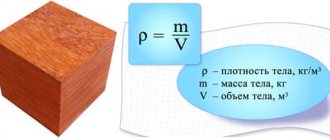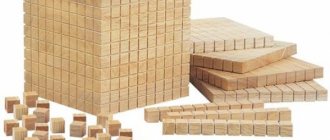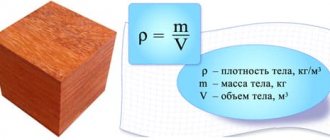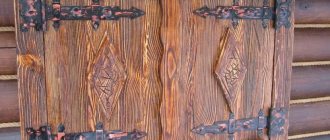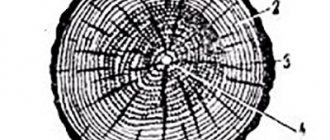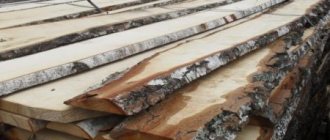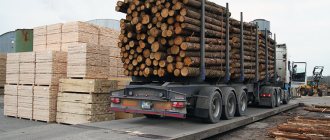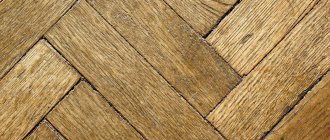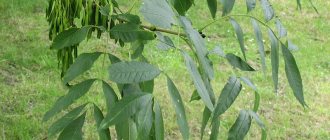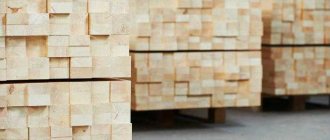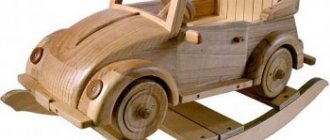Common aspen is a deciduous plant belonging to the Poplar genus of the Willow family, widespread in the temperate and cold climate zones of the Eurasian continent. This is a large, tall tree, the height of which can reach 35 m with a trunk diameter of 1 meter. It grows quite quickly and lives quite a long time: up to 80-90 years. At the same time, aspen is susceptible to the development of various diseases, which is why high-quality specimens of large size and respectable age are extremely rare.
Appearance and physical and technical parameters
According to the structure of its woody part, aspen belongs to the non-core species of the scattered-vascular type. The wood of this tree is whitish in color with a slightly greenish tint. At the same time, the texture of aspen is not particularly expressive and effective.
Tree rings and heart-shaped rays are practically invisible on it. In comparison with other representatives of deciduous trees used on an industrial scale, it can be called rustic, therefore, it is practically not used to create decorative products.
At the same time, this material has good abrasion resistance and lends itself well to turning and cutting. It is quite homogeneous, and due to this, when making blanks, it can be cut in any direction, without causing dents or chips.
The photo shows an aspen tree and some of its features.
Characteristics of aspen wood
Aspen wood is dense, with poorly visible growth rings, and uniform in structure. The moisture content of the wood in the central part is lower than in the peripheral areas of the trunk. The color of the wood is white, grayish-white, sometimes greenish. In the cut, it is impossible to notice the rays emanating from the center. For some decorative work, such wood is valuable precisely because of its uniformity. After staining or painting, the structure of the wood remains uniform and does not reveal any structural elements.
The moisture content of a freshly cut tree is about 82%, while the maximum moisture content of this wood (when soaked) reaches 185%. With high atmospheric humidity, aspen quickly absorbs water, but also quickly loses it when drying, which is a positive quality.
Main characteristics:
- Color/Appearance: The core is usually light brown. The sapwood is wide, pale yellow almost white, and not clearly demarcated, tending to gradually merge with the heartwood.
- Texture: The fibers (grain) are generally straight, with a uniform, moderate texture. Low natural shine.
- Fiber structure: diffuse-porous; single and radial multiples, medium pores without a specific arrangement, moderately numerous to numerous; marginal parenchyma; narrow beams located quite close.
- Rot Resistance: Classified as short-lived and also susceptible to insect attack.
- Manufacturability: Easy to work with hand tools and machines, although planing requires sharp cutters to avoid fuzzy surfaces (subsequent fine sanding may be required to obtain a smooth surface). It cracks easily and has poor nail holding ability. Wood tends to warp and warp as it dries. The paintwork glues and finishes well.
| Physical properties | |
| Average Density: | 450 kg/m³ |
| Density limits: | 360–600 kg/m³ |
| Longitudinal shrinkage: | 0,4 % |
| Radial shrinkage: | 3,3 % |
| Tangential shrinkage: | 8,2 % |
| Radial swelling: | 0,13 % |
| Tangential swelling: | 0,25–0,31 % |
| Bend strength: | 76 N/mm² |
| Compressive strength: | 36 N/mm² |
| Tensile strength: | 69 N/mm² |
| Thermal conductivity: | 0.17-0.19 W/K m |
| Fuel properties | |
| 19.8 MJ/kg | |
Where does aspen grow and its differences from poplar
Common aspen is one of the important forest-forming species of Russia and is found throughout almost the entire territory of the country, including the European part, as well as the regions of the Far East and Siberia. In addition, this tree can be found in Kazakhstan, Mongolia, Korea, China and many European countries.
It thrives on soils of any type in forest-steppe and forest zones, mainly along the banks of rivers and ravines, as well as on the edges and areas with elevated terrain.
As a rule, this tree grows in a group, forming aspen forests, or is part of mixed forests, combined with alder, larch, pine and birch. Due to the deep location of the roots, aspen is not very sensitive to small forest fires.
Otherwise, this plant is usually called trembling poplar, but there are a number of certain differences between these trees.
So, what is the difference between aspen and poplar:
- Poplar buds bloom much faster in spring, releasing a characteristic odor and the appearance of stickiness. Aspen buds “come to life” more slowly.
- Aspen blooms in early spring, before the leaves fully bloom. The poplar blossoms in the summer, spreading fluff around itself, while the inflorescence of the aspen is long earrings.
- The leaves of these trees vary in shape.
- Aspen branches are more fragile compared to poplar.
On the left are aspen leaves, and on the right are poplar leaves.
What is aspen - botanical information
Sometimes someone gets confused whether a coniferous tree is aspen or deciduous.
We answer: this is a fast-growing deciduous tree up to 35 m tall from the Willow family of the Poplar genus. The Latin name is Pópulus trémula. The diameter of an adult tree is 1 m. How many years does aspen live? Botanical encyclopedias answer this way: its average life expectancy is 80 years, although there are specimens that “celebrated” their 150th anniversary. Usually, in old age, this representative of the Poplar genus is susceptible to tree diseases. Numerous root shoots can be seen around the common aspen. The roots go deep into the ground, but there are many shoots.
Mature aspen
In the photo below, notice the smooth greenish bark of the young aspen. The wood inside is a pleasant white-green shade. The leaves resemble a diamond, up to 7 cm in size; the top of the leaf can be either sharp or blunt, but the base is always rounded. Interestingly, the leaves of the shoots are always larger and look like a heart.
Young aspen bark
Aspen is dioecious; both sexes have dangling catkins. In male aspen they are red in color, and in female aspen they are greenish. Flowering occurs in early spring before the leaves emerge.
Density, strength and moisture content
One of the important indicators that directly affects the quality and final appearance of processed wood raw materials is wood density. This term refers to the ratio of the mass of wood of a certain moisture content to its volume.
Moreover, the more humid the woody part of the tree is, the greater its density. In addition, when assessing wood, an indicator of the conditional density of wood is also used, which is the ratio of the mass of the test sample in a completely dried state to its volume at the hygroscopic limit.
Indicators of density and conditional density of aspen are as follows:
| Density when dried | 470 kg/m3 |
| Conditional density | 400 kg/m3 |
Density coefficient at different humidity levels:
| Humidity level, % | Density coefficient, kg/m3 |
| 10 | 490 |
| 20 | 510 |
| 30 | 540 |
| 40 | 580 |
| 50 | 620 |
| 60 | 660 |
| 70 | 710 |
| 80 | 750 |
| 90 | 790 |
| 100 | 830 |
| In freshly cut condition | 760 (82) |
Thus, you can see that aspen wood has an average density of 490 kg/m3. The natural moisture content of this material when freshly cut is on average 82% with a maximum moisture content and water absorption of 185%.
Determination of the compressive strength of wood is determined using prototypes of prismatic shape, subjected to gradual loads until complete destruction.
For common aspen, these indicators will look like this (according to research by S.I. Vanin):
- Ultimate compressive strength in the direction along the fibers (at a humidity of 15%) – 374 kg/cm2.
- When stretched in the direction along the fibers - 1450 kg/cm2.
- When performing shearing in the radial plane – 44 kg/cm2.
- During the static bending operation (at a humidity of 15%) - 673 kg/cm2.
- When performing impact bending in the tangential direction - 0.37 kgm/cm3.
According to the “Handbook of Mechanical Properties of Wood”, the average values of wood strength will be as follows:
- Strength limit for static bending is 76.5 MPa.
- Tension along the fibers is 121 MPa.
- Compression along the fibers is 43.1 MPa.
- Splitting along the radial plane – 6.15 MPa.
- Along the tangential plane – 8.42 MPa.
- Impact strength – 84.6 KJ/m2.
- The modulus of elasticity of aspen wood during static bending is 11.2 GPa.
Aspen wood has good flexibility in various types of processing, including cutting, bending, painting and polishing. In addition, it peels well.
At home
Despite its ubiquity (aspen can be found throughout Europe and, partly, Asia), its low cost and ease of processing, aspen is rarely used for the construction of houses and farm buildings.
For a long time, people have treated it with some distrust, considering it a weed and unnecessary plant. In addition, according to ancient legend, aspen was the very tree on which Judas Iscariot, who betrayed Jesus Christ, hanged himself by selling him for thirty pieces of silver, so it was believed that the wood of this tree has negative, dead energy.
These beliefs can be treated differently. However, there are very real arguments against using aspen wood as a building material for the construction of houses.
These include:
- Insufficient quality of raw materials. Indeed, in order to find a timber suitable for the construction of a log house, you will have to spend a lot of time. As a rule, no more than 10% of the material from this tree has the required characteristics.
- Susceptibility to shrinkage. Since aspen has high natural humidity, its wood can be used for construction only after thorough drying. However, during this process it is greatly turned out and twisted.
When building houses from aspen, the quality of the timber used is of decisive importance, especially its humidity, which should not exceed 20%. Some experts recommend using aspen only for laying the first crown of a house made of timber, since it resists rotting well and is characterized by increased strength, and the frame itself should be made of pine.
This move will reduce the cost of construction, since the cost of selected quality aspen timber is quite high - from 10,000 per cubic meter. meter and above.
Specific and volumetric weight of wood
Important indicators on the basis of which the quality of the wood used is assessed include its specific and volumetric gravity. To calculate the specific or relative weight of a wood material, its weight is divided by the same amount of water.
For aspen wood it is, at a humidity of 12%, 510 kg/m3. Moreover, unlike trees of other species, the values of this indicator in aspen are not constant, but can vary quite widely.
This is due to the structure of the material’s fibers, which are highly porous. In other words, commercial aspen wood always contains a certain amount of moisture, which it easily releases when drying and picks up just as easily when placed in a more humid environment.
In addition to specific gravity, it is also customary to distinguish between the volumetric weight of wood or the weight of a unit of volume, which is measured at a raw material moisture content of 15%.
Data on the volumetric weight of aspen with changes in its humidity are given in the following table:
| Humidity percentage | Weight 1kg3 wood |
| 12-18% | 500 |
| 18-23% | 550 |
| 23-45% | 600 |
| Freshly cut | 800 |
Where aspen grows: growing areas
This tree is quite common in Russia: aspen can be found in the central zone of the country, Arkhangelsk, Vologda regions, Transbaikalia, and the middle Volga region. The favorite place of growth is considered to be forest and forest-steppe zones, banks of reservoirs, swamps, and ravines.
The tree is not very picky about the choice of soil. Once in any soil, the aspen will eventually spread in different directions, where a young aspen forest will form. What trees grow in the aspen forest? These can be pine, spruce or birch. You can find one or more aspens among a birch grove, in an alder forest and next to oak trees.
READ Linden tree: description of the trunk, crown, fruits, flowers
The aspen tree can be heard from afar with the noise of its trembling leaves
It is more difficult to grow in the steppe, and aspen shoots root shoots up to 40 m in different directions from the mother tree. After a few years of such capture, an aspen clump will form in the steppe, which will occupy many hectares over several decades.
After a fire, aspen trees recover very quickly thanks to their deep root system.
This interesting representative of the willow family is widespread not only in Russia, it has also invaded the forests of Europe, the Mongolian and Kazakh steppes, and the Korean Peninsula.
Chemical composition, hardness and strength properties
The bulk of aspen wood consists of various organic substances, including four main elements: oxygen, hydrogen, carbohydrate and nitrogen. In addition, it contains a certain amount of minerals, which during combustion form an ash residue.
During research, 17 chemical elements were found in the woody part of this plant, such as aluminum, silicon, magnesium, calcium, chromium, titanium, iron, cobalt, nickel, copper, molybdenum, zirconium, zinc, strontium, manganese, lead and barium.
It was noted that the chemical composition of aspen wood changed depending on its age: in older aspens, the titanium content increased and the amount of copper, aluminum, silicon, iron, nickel, strontium and zirconium decreased. The quantitative ratio of other elements remained unchanged.
The organic compounds in aspen wood include: ash – 0.26%; pentosans – 27.47%; lignin – 21.81%; cellulose – 41.77%. The impact hardness of aspen wood is 640 gmm/mm2. That is, it can be classified as a soft breed.
Furniture panels made of aspen
People have been using furniture made from natural wood since ancient times. And today it does not lose its relevance and popularity. For its production, wood of various types is used, including common aspen.
Depending on the size of the pressing equipment used, panels, facade elements, decorative panels, etc. are made from it. In this case, the initial wood raw material, which is a 30 mm board with a moisture content of 80%, undergoes pre-treatment: it is impregnated and dried for 70 hours to a moisture content of 10%.
Aspen combustion temperature, thermal conductivity
Like a number of other coniferous and deciduous tree species, aspen is used as a raw material for isothermal processes accompanied by the release of heat. In this regard, such an indicator as the calorific value of this tree is of particular importance.
In accordance with this criterion, defined as the amount of heat released by one weight unit of wood material during combustion, aspen can be classified as a low-heat species. That is, the amount of heat generated by it will be very small.
The burning temperature of aspen is 612 degrees. Firewood from this tree burns quite quickly, without the formation of charcoal residue. Because of this, they are not very well suited for heating purposes, since with their use it is impossible to maintain a constant operating temperature in the firebox.
However, such firewood is well suited for burning off soot and cleaning the chimney after using raw materials from softwood, which emit a large amount of soot and pollution.
The characteristics of aspen wood as a source of thermal energy are given in the following table:
| Name of firewood type (in naturally dried state) | Calorific value, kcal/kg | Specific calorific value, kcal/kg |
| aspen | 4953 | 1737 |
It is also worth noting that, compared to other tree species, aspen has a high ability to absorb moisture. Its hygroscopicity limit is 21.8 - 22.9%.
Despite its obvious shortcomings, aspen wood also has a number of positive qualities that deserve a rating of “five points” on a five-point rating scale. Namely:
- Decorative. Thanks to its pleasant silvery hue, it has been used by craftsmen since ancient times to cover the roofs of temples.
- Ease of use. Many products, including dishes, are made from soft and pliable aspen.
- Lack of resin. Because of this, it is often used to make baths.
- Environmental friendliness and safety for humans.
Use of aspen in industry
The main consumers of aspen are the construction industry. Various lumber is produced from it: round timber, timber, boards, particle board, fiberboard, peeled veneer. Bathroom equipment is made from timber, for example, benches, ladders, shelves, grates and pallets. Aspen slats are used to produce packaging boxes and containers for storing and transporting goods. Until recently, before the advent of computer technology, drawing drawing boards were made from dense white aspen.
The shavings are a by-product of production and are used as fuel for thermal power plants, as well as insulation in rural and country construction. Wood shavings used for combustion at thermal power plants are considered an environmentally friendly material, and wood is a renewable natural resource. For heating private houses, chopped wood, scraps from production, and fuel pellets are used.
Wood is also good because it lasts for a long time in water, and when dried it does not crack or warp. Therefore, from ancient times, well frames were knitted from aspen logs. You cannot find better wood for building a bathhouse: it is strong and durable, retains heat well, and does not burn the body when touched - therefore there will be no need to lay a rug on the shelves. Even in areas rich in timber, they preferred to build baths from aspen, however, such preference was given to it only where aspen trees with straight trunks and healthy wood were found.
Today, various building materials are produced from aspen - lining, boards, which are used for the construction of baths and saunas. The unique properties of aspen building materials are that they are durable and strong, retain heat excellently, but do not burn when heated.
Standards according to GOST
Since aspen wood raw material is a building material with various ranges of uses, it is subject to a number of requirements and standards that it must comply with.
Standards for the quality and appearance of semi-finished products, profile parts and other elements for construction are contained in GOST 8242-88. When using aspen wood raw materials for pyrolysis and charcoalization, GOST 24260-80 is used.
At the end of the article, you can watch a video about the collection and non-standard use of aspen bark:
Aspen - contraindications for use
Each person has his own individuality, therefore, for some people, taking aspen bark may be harmful or cause side effects. Let's consider some contraindications to the use of aspen:
- Individual intolerance;
- Chronic constipation;
- Pregnancy and lactation period;
- Children under 12 years of age;
- Kidney failure.
Sources:
- https://agronom.guru/osina-foto-dereva-i-listev
- https://lesoteka.com/derevya/osina
- https://rastenievod.com/osina.html
- https://PchelkinaStrana.ru/sad/osina-derevo.html
- https://stroyres.net/lesnye-materialy/drevesina/porodi/osina-i-ee-svoystva.html
- https://kvetok.ru/listvennye-derevya/osina-kak-vy-glyadit-i-chem-otlichaetsya-ot-topolya
- https://derevo-s.ru/drevesina/listvennye/osina
- https://LivePosts.ru/articles/priroda/rasteniya/osina-opisanie-foto-spektr-primeneniya
- https://domsad.guru/derevya-kustarniki/pic919_der-foto-osiny-dereva-i-listjev.html
- https://DachaDecor.ru/lekarstvennie-rasteniya/osina-ili-topol-drozhaschiy-lechebnie-svoystva-i-primenenie-v-narodnoy-meditsine
- https://medicina.dobro-est.com/osina-poleznyie-svoystva-vred-primenenie-i-lechenie-osinoy.html
Factors influencing the thermal conductivity value
The thermal conductivity of materials used in construction depends on their parameters:
At the beginning of the measurement, the initial stationary temperature state is assumed. The measuring sensor and the sample form two semi-infinite regions. The linear part of the curve is parameterized by the used capacitance of the flat source and the thermal insulation properties of both adjacent half-spaces.
In general, the calculation of the thermal conductivity value can be expressed by the equation. During practical measurements, measurement results on reference materials were applied to select the optimal measurement interval and optimal heat source power output with respect to maximizing measurement accuracy and repeatability.
- Porosity – the presence of pores in the structure of a material disrupts its homogeneity. When a heat flow passes, part of the energy is transferred through the volume occupied by pores and filled with air. It is accepted to take the thermal conductivity of dry air (0.02 W/(m*°C)) as a reference point. Accordingly, the larger the volume occupied by air pores, the lower the thermal conductivity of the material will be.
- Pore structure – the small size of the pores and their closed nature help reduce the rate of heat flow. In the case of using materials with large communicating pores, in addition to thermal conductivity, heat transfer processes by convection will be involved in the heat transfer process.
- Density - at higher values, particles interact more closely with each other and are more conducive to the transfer of thermal energy. In general, the thermal conductivity values of a material depending on its density are determined either on the basis of reference data or empirically.
- Humidity – the thermal conductivity value for water is (0.6 W/(m*°C)). When wall structures or insulation get wet, dry air is displaced from the pores and replaced with drops of liquid or saturated moist air. Thermal conductivity in this case will increase significantly.
- The effect of temperature on the thermal conductivity of a material is reflected through the formula:
λ=λо*(1+b*t), (1)
Determination of the thermal conductivity coefficient of building materials using non-stationary flat measuring equipment. Due to its design, non-stationary flat measuring equipment has many advantageous properties. With this device, you can easily and quickly measure the value of the thermal conductivity coefficient for any building material.
The measurement itself lasts only a few seconds, and therefore the value of the thermal conductivity coefficient can be determined depending on the humidity of the test sample. The flat sensor provides the ability to determine the thermal conductivity coefficient of significantly inhomogeneous materials. The sample size requirements are significantly smaller compared to other methods. For these reasons, it is possible to determine the thermal conductivity coefficient even in a part of building products, since with standard samples the thermal technical properties can differ greatly from those of the final products. Measurement accuracy. As with any measurement method, even with a non-stationary flat meter, the greatest error comes from the test sample. If the surface of the test sample is uneven.
- Measurement speed.
- Unlike classical methods, this method is incomparably faster.
- Flexibility of measurements.
Due to its favorable properties, the measuring device can be used to determine the measurement of thermal conductivity in a wide variety of materials and products, for example.
where, λо – thermal conductivity coefficient at a temperature of 0 °C, W/m*°C;
b – reference value of the temperature coefficient;
t – temperature.
What is attractive about the low thermal conductivity of laminated veneer lumber?
As you know, the lower the thermal conductivity* value, the better the material retains heat.
The thermal conductivity of laminated veneer lumber is its most important characteristic. The thermal conductivity coefficient of laminated timber is the lowest and is 0.1 W/m*C.
To make it more clear, let’s compare the thermal conductivity of other materials:
- Reinforced concrete has a thermal conductivity coefficient of 2.04 W/m2,
- Foam concrete has a thermal conductivity of 0.47 W/m2,
- Hollow brick - 0.52 W/m2,
- Profiled timber has a thermal conductivity of 0.18 W/m2,
- Glued laminated timber – 0.1 W/sq.m.
Such a low thermal conductivity of laminated veneer lumber is achieved due to the presence of several factors:
- The basis of laminated veneer lumber is wood, which itself has low thermal conductivity.
- In the production of laminated veneer lumber, glue is used, which in turn is an excellent heat insulator. Our company uses German Akzo Nobel glue, which is designed for gluing wood to wood. It produces adhesive joints with very high strength values under various environmental conditions. The connection has high heat resistance, resistance to solvents and creep resistance when exposed to loads.
Based on the above:
- Houses built from laminated timber are very comfortable and practical:
- In winter, you will spend a minimally short time warming up the entire house, and retain heat for a very long period. This will result in significant savings on heating costs.
- In the summer, there will be no constant need for air conditioning at home, because... the coolness in the house will remain for quite a long time, unlike houses built from other materials. And this also saves on house maintenance.
2. The walls of the house can be made of significantly less thickness than from other materials. For example, the thermal conductivity of a 150x150mm beam is approximately the same as a log with a diameter of 240mm.
3. There is no need for additional wall insulation.
A beam with a cross-section of 200 mm can provide comfortable conditions even in winter frosts without additional insulation.
Thus, laminated veneer lumber, due to its low thermal conductivity, is an ideal building material for the construction of comfortable housing, and also provides the opportunity for additional savings on material.
*Reference: Thermal conductivity is a quantitative characteristic of a body’s ability to conduct heat.
Calculator for calculating wall thickness based on thermal conductivity
In practice, such data is often used and not only by professional designers. There is not a single law prohibiting you from independently creating a project for your future home. The main thing is that it complies with all standards and SNiPs. To calculate the thermal conductivity of a wall, you can use a special calculator. You can either install such a “miracle of progress” on your computer as an application or use the service online.
Calculator calculation window
There is no wisdom in it. You just select the necessary data and get the finished result.
Calculation of wall thickness using ordinary clay bricks on cement-sand mortar
There are also more complex calculation calculators, which take into account all layers of walls; an example of such a calculation “mechanism” is shown in the photo below.
Calculation of heat conductivity of all layers of walls
Of course, the thermal efficiency of the future building is an issue that requires close attention. After all, it depends on how warm the house will be and how economically it will be heated. Each climatic region has its own standards for thermal conductivity coefficients of enclosing structures. You can calculate the thermal efficiency yourself, but if problems arise, it is better to seek help from specialists.
Previous Building materials What cement is made of: from theory to practice Next Building materials A strong floor for every home: laminate or linoleum - which is better
